
According to Keller, when it comes to online branding, there are two main issues: what makes a strong brand and how do you build a strong brand.
There are two main online branding frameworks that we will talk about in more detail today: the Keller’s Brand Equity Model also called the Customer-based Brand Equity Model and the Brand Key Model.
By the end of this blog post, you will have learned:
- What is the Keller’s Brand Equity Model and how to apply it;
- What is the Brand Key Model and how to apply it;
- Which of the two online branding frameworks you can best apply for your Digital Marketing Plan.
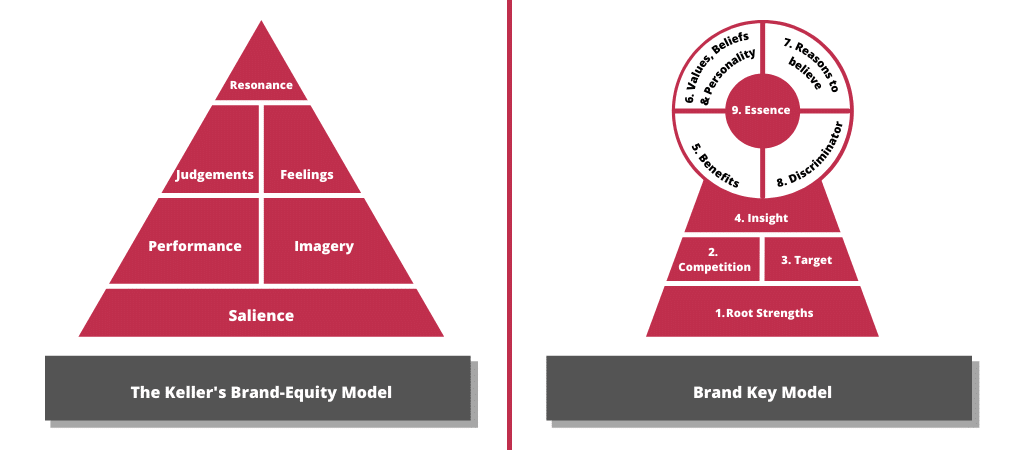
Online Branding Frameworks: Keller’s Brand Equity Model
For a brand to be successful, you must shape how customers think and feel about your product, according to MindTools.
The type of experiences, thoughts, feelings, beliefs, opinions and perceptions that a customer might have about your brand is key to how strong your brand is and can become.
The best part is that by doing the right research, by paying enough attention to understanding customer attitudes and by translating conclusions into actions, you can influence your customer’s attitudes for the better.
Keller’s Brand Equity Model provides a framework that helps you assess customer attitudes and behaviour in each phase of the customer journey: awareness, interest, purchase and loyalty.
More specifically, the model illustrates a pyramid and four fundamental questions that the customers are most likely to ask about your brand:
- Who are you? Defining your brand identity;
- What are you? Defining the deeper meaning of your brand;
- What do I think or feel about you? How are they likely to respond to your brand;
- What about you and me? How does online branding result in building stronger relationships.
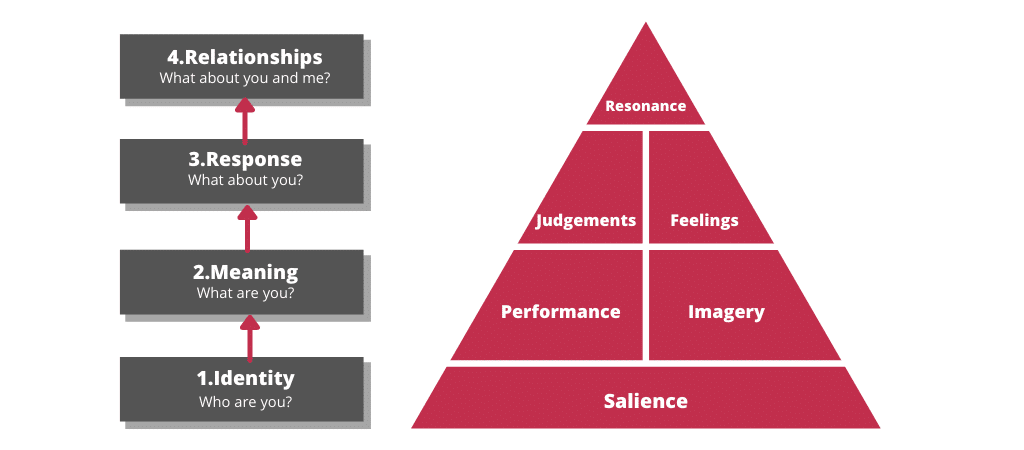
Let’s discuss these concepts in more detail and how you can assess them.
Brand identity: Who are you?
As always, a customer’s journey starts with awareness. When building your brand, you should first make sure your brand stands out and it makes use of unique and recognizable brand elements.
Therefore, when assessing the brand identity, think and describe the branding elements that provide support in the awareness phase. To what extent is the brand “top-of-mind” and how easy is it to recognize and recall?
To assess brand awareness, you might think of elements like the brand name, logo, symbols and what kind of associations do they create in customers’ memory.
Brand meaning: What are you?
To define the brand meaning, you should think of what your brand means and what it stands for in your customer’s mind. In this case, the CBBE model highlights two perspectives: the brand performance and imagery.
Brand performance
Brand performance explains how well does a brand meet a customer’s functional needs, besides visual aspects.
To define brand performance, answer the following questions:
- Primary ingredients and supplementary features
- Reliability, durability and serviceability
- Reliability: performance consistency during the life of the product.
- Durability: the expected economic life of the product.
- Serviceability: the ease to repair the product if needed.
- Service effectiveness, efficiency and empathy
- Service effectiveness: how well does the brand satisfy service expectations.
- Service efficiency: the speed and responsiveness of the service.
- Service empathy: are the service providers trusting, caring, and have the customer’s interests in mind?
- Style and design. It may depend on how the product feels, looks, how does it sound or smell. What is the product’s size, shape, colours, materials and what associations do they generate?
- Price-performance. What kind of associations does the price generate?
Brand imagery
The other type of brand meaning is brand imagery. It represents the way people think about a brand abstractly. There are many kinds of intangibles that can form imagery associations, but some of them are:
- User profiles. What is the type of person or organisation who uses the brand? Consumers may base user associations on typical or idealized descriptive demographic factors: gender, age, race, income. Psychographic factors play also a part: career, possessions, social issues, political institutions.
- Purchase and usage situations. Under what conditions or circumstances can the brand be used? The type of channel or location; the time of day, week, month or year; the type of activity, etc.
- Personality and values. Through consumer experience or marketing activities, brands may take on personality traits or human values. Therefore, a brand may seem modern, exciting, sincere, cool, etc.
- History, heritage, and experiences. Brands can be also associated with their past or specific events in their history. As well, brands can associate with personal experiences that our friends or family have had with the brand.
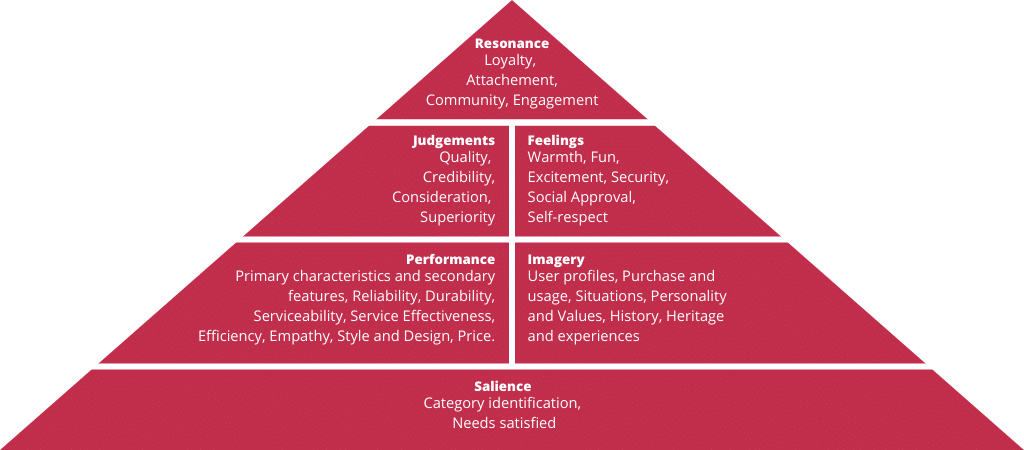
Brand response: What do I think or feel about you?
Brand judgements
Brand judgments are customers’ evaluations of the brand. These evaluations result from their brand performance and brand imagery associations. Here are some examples of relevant brand judgements:
- Brand quality. What are the overall evaluations of a brand?
- Brand credibility. What is the perceived expertise, trustworthiness and likability?
- Brand consideration. How likely is it that the customer will actually consider the brand for an actual purchase?
- Brand superiority. To what extent do customers consider the brand superior or unique compared to other brands?
Brand feelings
On the other hand, brand feelings are customers’ emotional opinions about a brand. What feelings are evoked by the marketing activities of a brand?
Here are six important types of brand-building feelings:
- Warmth. Does the brand make customer feel calmness and peacefulness?
- Fun. Does the brand make customers feel amused, lighthearted, joyous, playful and cheerful?
- Excitement. Does the brand make customers feel energized?
- Security. Does the brand provide a feeling of safety, comfort, self-assurance?
- Social approval. Does the brand give customers a belief that others like their appearance or behaviour?
- Self-respect. Does the brand make customers feel better about themselves?
Brand resonance: what about you and me?
Finally, brand “resonance” is the most difficult, time-consuming, but also desirable level to be reached by a brand. You have achieved brand resonance when your customers feel a deep, psychological bond with your brand.
Resonance is broken down into four categories:
- Behavioural loyalty. How often do customers purchase from a brand and how much?
- Attitudinal attachement. Do your customers love your products? Do they consider it a special purchase?
- Sense of community. Do your customers feel a sense of community with other people associated with your brand?
- Active engagement. Do your customers engage with your brand? This does not necessarily mean purchases.
If you’re interested to know more about the Brand Equity Model, and more generally about brand management, I strongly recommend getting the Strategic Brand Management book, by Kevin Lane Keller.
Online Branding Frameworks: Brand Key Model
The Brand Key Model is used to assess the strength of your online branding efforts and your brand’s positioning. Not so similar in shape, compared to the CBBE model, but it is also built of different phases, to be more precise: nine. Let’s define them below.
- Root strengths. Think of the original product, values, and benefits that make the brand great. These will be the foundation of your product.
- Competitive environment. Look at the market in which the brand competes and define the unique value that the brand delivers compared to competitors.
- Target. What is the target audience? Who are they and what are their interests, values?
- Insight. What are the main elements gathered about the target audience. These insights will ultimately define the final outcome.
- Benefits. What are the differentiating functional, emotional and sensory benefits that motivate a purchase?
- Values, beliefs, personality. What does the brand value? What does the brand stand for/ believe in? What kind of personality does the brand have?
- Reasons to believe. A brands ‘reason to believe’ is the proof that it offers to its consumers to substantiate its benefits/ brand experience.
- Discriminator. The single most compelling and competitive reasoning for consumers to choose the brand over its competitors.
- Essence. Refinement of the brand into a core idea or brand promise, the brand essence is the heart and soul of the brand as it guides all brand actions.
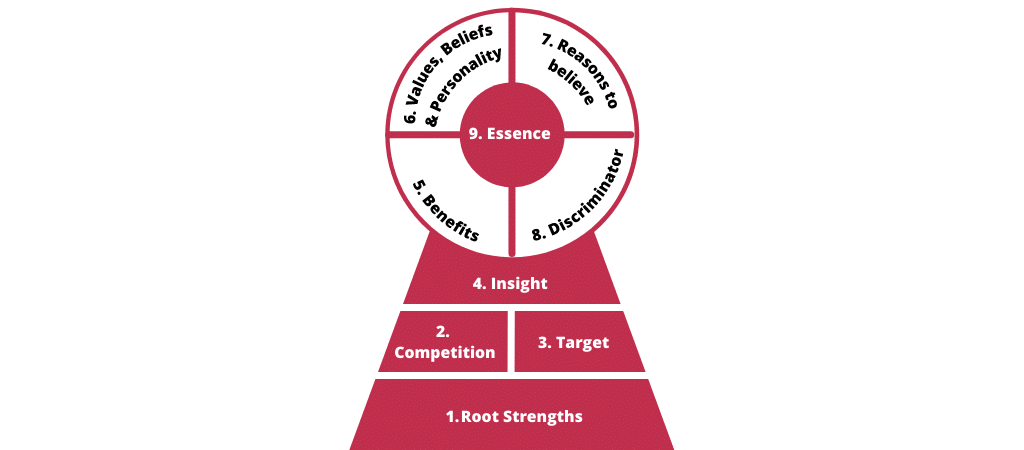
Comparing Online Branding Models
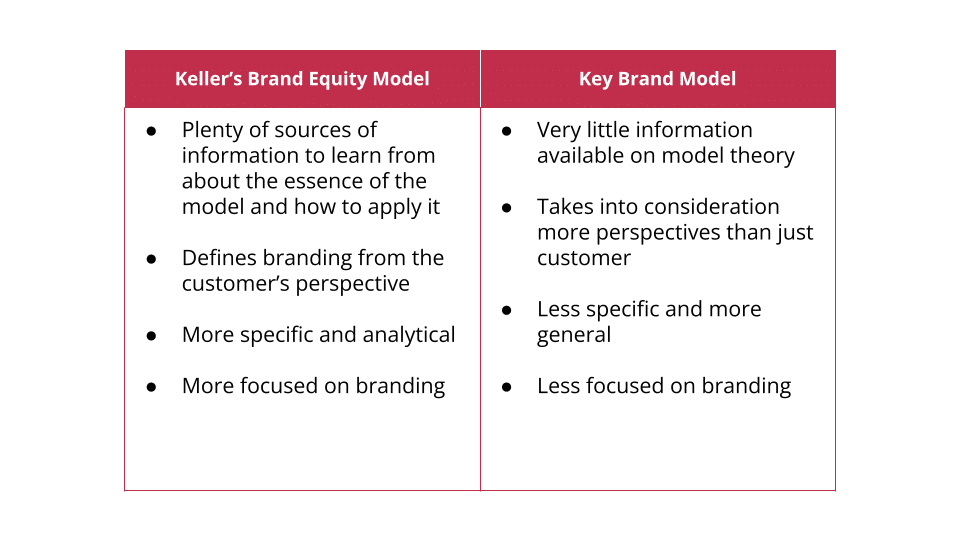
What framework should you use for your Digital Marketing Plan? Both online branding frameworks are widely used by companies and for education purposes, I personally recommend working with the Keller’s Brand Equity Model because it is more specific, which makes its application easier.
Would you like to learn more about Digital Marketing concepts? Explore our Digital Marketing Minor Blog!
I hope you’ll find this blog useful for your Digital Matketing Plan. Let me know your feedback or if you might have any questions!

0 Comments